Occupational Safety Training for Handheld Drill Operation
99,000 ₫
Note: The above price is calculated for one person. Prices may vary depending on the number of trainees participating in the course and market fluctuations. For more accurate pricing information, please refer to the price list or contact our consultants directly.
Occupational safety is an important issue when operating a handheld drill and needs to be addressed promptly to ensure the health and safety of workers while also enhancing the reputation of businesses here. The Occupational Safety Training course is one of the effective solutions to raise awareness of accident prevention among workers when operating handheld drills.
Table of Contents
Toggle1. Overview of Hand Drills
a. What is a Hand Drill?
A hand drill, commonly referred to as a “hand drill” in English, is a handheld power tool used to drill holes into materials such as wood, metal, plastic, and many other substances. Hand drills are commonly used in craftwork, mechanical work, construction, and various industrial sectors.
Hand drills operate by using an electric motor to rotate a drill bit or cutting blade, generating rotational force to penetrate the material and create a hole or specific target. Users can control the rotation speed and the pressure applied to the drill to adjust the drilling process according to the material being worked on.
Hand drills have a wide range of applications and are an essential tool for DIY projects or repair work. There are various types of hand drills, including corded power drills and cordless (battery-operated) drills.

b. Operating Principle of a Hand Drill
The operating principle of a hand drill is relatively simple and relies on using an electric motor to generate rotational force to drill holes or cut materials. Below is a basic description of how a hand drill works:
- Motor: Hand drills are equipped with an electric motor, typically an AC motor or a brushless DC motor. This motor provides the energy to generate rotational force.
- Drill Shaft: The drill shaft is part of the hand drill, usually with a drill chuck on one end and a fan or gear mechanism on the other. The drill operates by connecting the chuck to the motor, which transmits rotation when the motor runs.
- Rotational Force: The motor generates rotational force during operation. This force is transmitted from the motor through gears or other transmission mechanisms to the drill shaft.
- Drill Bit or Cutting Blade: The chuck can be fitted with a drill bit (for drilling holes) or a cutting blade (for cutting or machining tasks). When the drill shaft rotates, the drill bit or blade penetrates the material.
- Pressure and Speed: Users adjust the pressure applied to the drill and the rotation speed to control the drilling process. Additional pressure helps the drill bit penetrate the material faster, while rotation speed determines the material removal rate.
- Drilling or Cutting Material: As the drill shaft rotates, it generates cutting force to drill holes or cut materials, depending on the type of drill bit or blade used.

c. Industries Using Hand Drills
Hand drills are versatile tools widely used across many industries and work fields. Some common industries and applications include:
- Construction and Infrastructure: Hand drills are used to drill holes for installing windows, doors, partitions, plumbing, electrical conduits, electronic devices, and other construction tasks.
- Mechanical Industry: The mechanical industry uses hand drills to drill holes, cut, and machine metals to create parts and mechanical products.
- Woodworking and Furniture: In woodworking and furniture manufacturing, hand drills are used to drill holes and create joints during production, frame assembly, and part connection.
- Maintenance and Repair: Hand drills are commonly used in repair and maintenance work in homes, construction sites, and other industrial facilities.
- Electronics and Electricians: In electronics, hand drills are used for installing and repairing devices. Electricians also use hand drills to make holes and install electrical conduits.
- Mining and Processing Industry: Hand drills are used to drill holes for extracting and processing minerals and resources from mines.
- Crafts and DIY Projects: Individuals, artisans, and hobbyists use hand drills for DIY projects or various craft tasks at home or personal workshops.
2. Overview of Safety Training for Hand Drill Operation
a. What is Occupational Safety Training?
- Occupational safety training for hand drill operation consists of sessions that provide awareness on preventing workplace accidents. Workers directly operating hand drills belong to Group 3.
- Safety training courses help workers recognize and avoid hazards, minimizing the risk of workplace accidents during operations.
REGISTER FOR OCCUPATIONAL SAFETY TRAINING
b. Training Duration
Initial Safety Training Duration
- Total training time is at least 24 hours, including examination.
- 8 hours of theory on policies and laws regarding occupational safety and hygiene
- 8 hours of theory on basic knowledge of occupational safety and hygiene
- 4 hours of theory on specialized training content
- 2 hours of practical training on specialized content
- 2 hours of theoretical examination at the end of the course
The safety training center will arrange sessions based on the worker schedule, typically across 6 sessions over 3 days if the company allows continuous learning.
Periodic Safety Training
- Before the occupational safety card expires, workers must complete a periodic safety training course, with the periodic training duration at least 50% of the initial training duration.
Explanation: The total duration of periodic occupational safety training is at least 12 hours, including examination. Upon completion and passing the test, the worker’s safety card is renewed.
c. Training Content
| No. | TRAINING CONTENT | TRAINING DURATION (HOURS) | |||
| Total | Including | ||||
| Theory | Practice | Exam | |||
| I | Policies and laws on occupational safety and hygiene | 8 | 8 | 0 | 0 |
| 1 | Overview of legal documents on occupational safety and hygiene. | 6 | 6 | ||
| 2 | Standards and technical regulations on occupational safety and hygiene. | 1 | 1 | ||
| 3 | Specific regulations from state authorities regarding safety and hygiene during new construction, expansion, or renovation, and for machinery, equipment, and hazardous materials. | 1 | 1 | ||
| II | Basic knowledge of occupational safety and hygiene | 8 | 8 | 0 | 0 |
| 1 | Basic knowledge of workplace hazards and harmful factors. | 4 | 4 | ||
| 2 | Methods to improve working conditions. | 1 | 1 | ||
| 3 | Safety culture in production and business. | 1 | 1 | ||
| 4 | Rights and responsibilities of employers and employees; safety policies; role of safety personnel. | 1 | 1 | ||
| 5 | Safety regulations, signage, use of safety equipment, first aid skills, and occupational disease prevention. | 1 | 1 | ||
| III | Specialized training content | 6 | 4 | 2 | 0 |
| Comprehensive knowledge of machines, equipment, hazardous substances; risk assessment and safe work procedures. | 6 | 4 | 2 | ||
| IV | Final exam for safety training | 2 | 2 | 0 | 0 |
| Total | 24 | 22 | 2 | ||
See more training content for all 6 groups
d. Occupational Safety Card
After completing the safety training and passing the exam, workers are issued an Occupational Safety Card (commonly referred to as a Group 3 Safety Certificate).
The Group 3 safety card shows details such as name, date of birth, job, and work environment, along with training duration, official stamp, and signature confirming course completion.
According to regulations in Clause 2, Article 24 of Decree 44/2016/ND-CP, there are two cases:
- If there is a labor contract between the employer and employee, the employer must sign and stamp the card after the worker completes training and passes the exam.
- If the worker is freelance or temporary with no labor contract, the training unit must sign and stamp the card after the worker completes training and passes the exam.

3. Hazards When Operating a Hand Drill
Operating a hand drill can involve several hazards if safety rules are not followed and care is not taken. Below are some common hazards when using a hand drill and how to prevent them:
- Injury from accidents: Using a hand drill without following safety rules can lead to injuries such as collisions, cuts, and wounds from the drill or work materials. To avoid this risk, always follow the manufacturer’s instructions and use personal protective equipment, including safety glasses, hearing protection, and gloves when necessary.
- Drilling into electrical wiring or water pipes: Drilling into a surface without knowing the location of electrical wires or water pipes risks causing electrical or water hazards. Before drilling, use wire and pipe detectors to locate safe drilling areas.
- Overloading: Operating the hand drill at excessive speed or pressure can damage the drill, cause injuries, or lead to loss of control. Follow the manufacturer’s instructions and use the correct speed and pressure for the material being worked on.
- Fire and explosion: Electric hand drills can present fire or explosion risks if safety rules are not followed when working near flammable materials or explosive gases. Use the hand drill in a safe environment and avoid flammable atmospheres.
- Generation of dust and fumes: When drilling or cutting materials, the hand drill can create dust and fumes that may be harmful to health. Use respiratory protection and work in a well-ventilated area when using the drill.
- Excessive working time: Working too long continuously with a hand drill can cause strain and fatigue, leading to looseness and increasing the risk of accidents. Take regular breaks and limit continuous drilling time.
- Incorrect use: Read the hand drill’s user manual carefully and follow the manufacturer’s guidelines. Use the correct accessories and drill bits for the specific job and avoid exceeding the drill’s capabilities.

4. Control Measures for Workplace Accidents When Operating a Hand Drill
To control workplace accidents when operating a hand drill, the following safety measures should be observed:
- Training and instruction: Ensure all hand drill users are trained and instructed on how to operate the machine safely and correctly. This includes understanding how to operate the drill, learning about potential hazards, and knowing how to handle the drill.
- Use quality drills from reputable suppliers to ensure machine stability and safety.
- Personal protective equipment: Hand drill operators should be equipped with PPE, including safety goggles, dust masks, hearing protection, gloves, and protective clothing if needed.
- Inspect the tool: Before use, check the hand drill to ensure it is functioning properly. Ensure power cords, switches, and accessories are in good condition and not damaged.
- Protection from impact: Avoid collisions with the drill and make sure there are no objects that could cause impact hazards during work.
- Identify safe locations: Before drilling, use wire and pipe detectors to determine safe locations and avoid drilling into hidden structures.
- Use correct accessories: Select and use the proper accessories, drill bits, and blades for the specific task. Do not alter or use unsuitable accessories.
- Limit working time: Avoid working too long continuously with a hand drill to reduce the risk of strain and loss of control.
- Periodic inspection and certification of hand drills to detect safety issues early such as wear, mechanical faults, or damage, thereby reducing the risk of workplace accidents.
5. Benefits of Occupational Safety Training
An Toàn Nam Việt provides the following excellent benefits to your business upon completion of occupational safety training courses as prescribed under Decree 44/2016/NĐ-CP on Occupational Safety and Hygiene for companies, factories, and enterprises.
- Workers can recognize potential accident hazards and take preventive measures to avoid workplace accidents.
- Your business can establish risk prevention measures in production, operation, and maintenance processes.
- Reduce costs associated with safety incidents in the workplace.
- Uninterrupted production will help increase labor productivity and product quality.
- Comply with occupational safety laws to avoid legal risks.
- Create reputation and professionalism in all aspects, thereby enhancing your company’s brand.
Nam Việt’s training courses are a solution to prevent and counter external factors that may endanger individuals, helping them avoid injuries or, in more severe cases, death.
REGISTER FOR OCCUPATIONAL SAFETY TRAINING SERVICE
6. Customer Feedback After Completing the Training
An Toàn Nam Việt has many years of experience in partnering with numerous enterprises across Vietnam in general and the southern provinces in particular. That responsibility is very precious to Nam Việt, which is why our Occupational Safety Training is becoming increasingly professional. The motivation for An Toàn Nam Việt’s growth to the present comes from both positive feedback and suggestions from businesses. Below are feedback excerpts from partners we have served.
Bac Nam E&C Investment and Construction Joint Stock Company
“The first time we used An Toàn Nam Việt’s service I was very surprised by the 24/7 enthusiastic support from the advisory team. The class organization was very quick and convenient for our company. Thank you very much for Nam Việt’s service!”
Hoa Dat Construction and Trading Joint Stock Company
“Nam Việt’s services have greatly helped us simplify occupational safety procedures and complete safety documentation for our operations. The advisory team is enthusiastic and timely in answering our questions. 5 stars for Nam Việt.”
See more customer interviews after using An Toàn Nam Việt’s services
7. An Toàn Nam Việt’s Capacity for Occupational Safety Training
An Toàn Nam Việt is a reputable and high-quality occupational safety training center in Vietnam today. Our occupational safety training sessions are continuously conducted at production workshops, factories, and construction sites nationwide (across all 63 provinces and cities in Vietnam).
REGISTER FOR OCCUPATIONAL SAFETY TRAINING SERVICE
Occupational safety training license
- An Toàn Nam Việt has been inspected and granted a certificate of eligibility to operate occupational safety and hygiene training by the Department of Safety under the Ministry of Labour – Invalids and Social Affairs. This further strengthens our capacity to provide occupational safety training.

Training materials and lectures
- Before training materials are used in occupational safety training courses, they are reviewed and approved to ensure the lectures are accurate and effective when applied.
- Our instructors’ teaching methods are standardized according to An Toàn Nam Việt’s teaching standards—methods researched and compiled by experts in occupational safety training to deliver the highest learning effectiveness for trainees.
Facilities
- Controlling classroom factors that affect the training process will increase teaching efficiency and trainees’ knowledge absorption.
- Our training facilities always provide spacious classrooms that meet standards for area, lighting, and training equipment, etc.
8. A Nationwide Reputable and Quality Safety Training Center
At An Toàn Nam Việt, we prioritize occupational safety training as our top professional commitment. For us, imparting self-protection knowledge to workers so they have safety tools in their livelihoods contributes to nation-building.
To ensure effective training, we carefully and meticulously prepare even the smallest details—from preparing tools, teaching equipment, to curricula, materials, audio, and lighting.
Our occupational safety instructors are experts with many years of experience in the field. They have even conducted research projects identifying hazards across industries and ways to prevent them.
Instructors’ lectures are derived from practical experience and are delivered in the most vivid and easy-to-visualize manner to workers. These factors make trainees comfortable during learning and help them absorb our teaching content well. Of course, the delivered knowledge always aligns closely with Decree 44/2016/NĐ-CP.
As a result, trainees learn many hazard prevention measures and how to protect themselves, and they can apply these appropriately in real work situations.
Our training center is proud to be a reputable, professional provider of occupational safety training with the following advantages:
- Competitive training costs while maintaining guaranteed training quality.
- Flexible training schedules adapted to the company’s production situation.
- Fast and legally compliant procedures for issuing occupational safety training certificates.
- Instructors with many years of industry experience.
- Classrooms controlled for factors that affect the training process to boost teaching efficiency and trainees’ knowledge absorption.
- Lectures tailored to occupational safety needs in enterprises.
- An Toàn Nam Việt works diligently and professionally to support customers accurately and quickly.

9. Additional Occupational Safety Training References
- Occupational safety materials for operating a hand drill (hand drill machine)
- Set of occupational safety training materials
- Set of occupational safety training tests
- Multiple-choice safety test for operating a hand drill
- Training slides for occupational safety when operating a hand drill
10. Occupational Safety Training Activities
1 review for Occupational Safety Training for Handheld Drill Operation
No comments yet

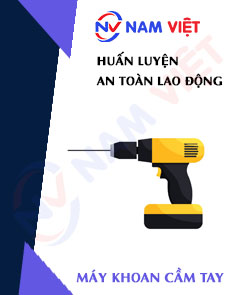
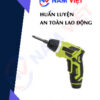
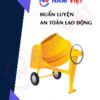






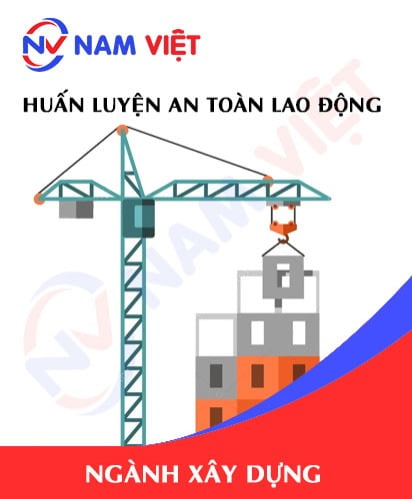
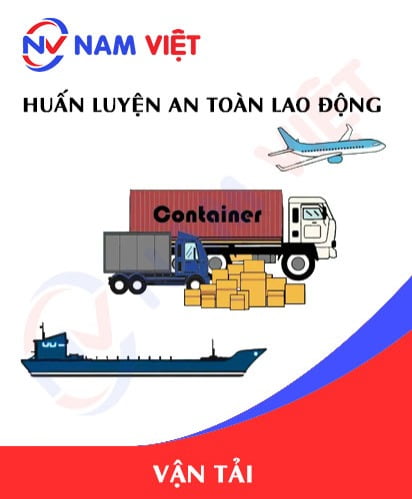

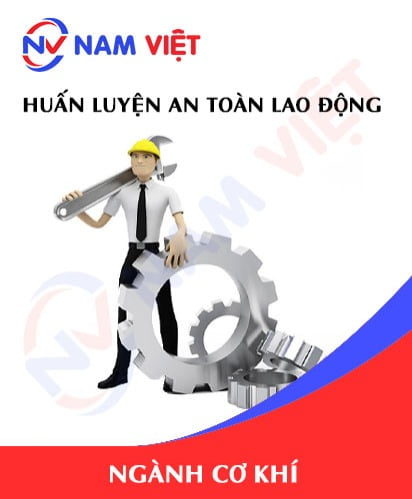

phanminhhang341
Dịch vụ tốt!!!